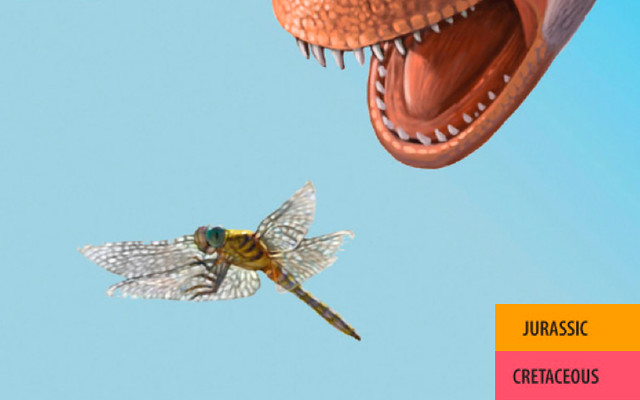A dragonfly is an insect belonging to the order Odonata, the suborder Epiprocta or, in the strict sense, the infraorder Anisoptera (from Greek ανισος anisos, “uneven” + πτερος pteros, “wings”, because the hindwing is broader than the forewing).[1] It is characterized by large multifaceted eyes, two pairs of strong transparentwings, and an elongated body. Dragonflies can sometimes be mistaken for damselflies, which aremorphologically similar; however, adults can be differentiated by the fact that the wings of most dragonflies are held away from, and perpendicular to, the body when at rest. Dragonflies possess six legs (like any other insect), but most of them cannot walk well. Dragonflies are among the fastest flying insects in the world. Dragonflies can fly backwards, change direction in mid-air and hover for up to a minute[2]
Dragonflies are major predators that eat mosquitoes, and other small insects like flies, bees, ants, wasps, and very rarely butterflies. They are usually found around marshes, lakes, ponds, streams, and wetlands because their larvae, known as “nymphs“, are aquatic. About 5,900 different species of dragonflies (Odonata) are known in the world today of which about 3000 belong to the Anisoptera.[3][4]
Though dragonflies are predators, they themselves are subject to being preyed upon by birds, lizards, frogs, spiders, fish, water bugs, and even other large dragonflies.
(From Wikipedia, February 2015)




